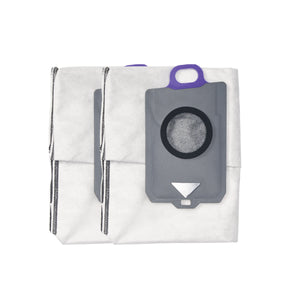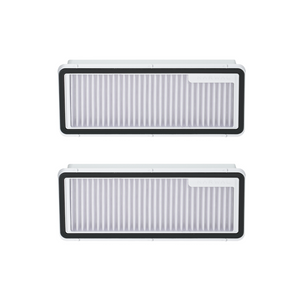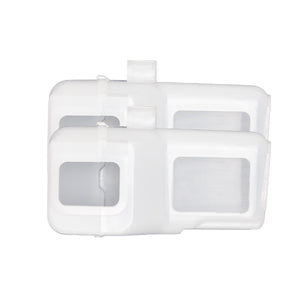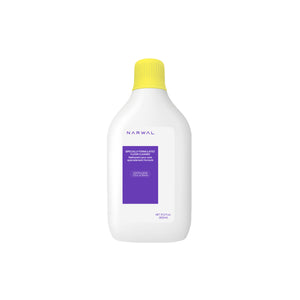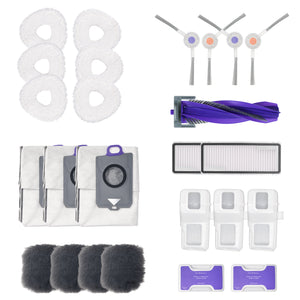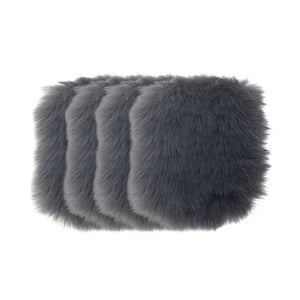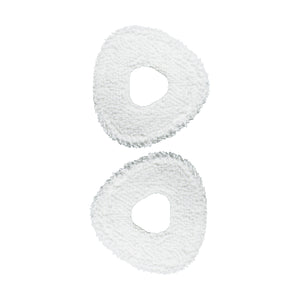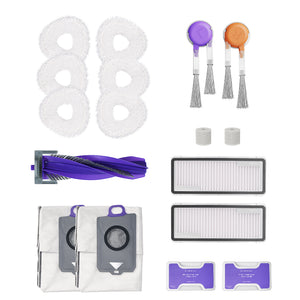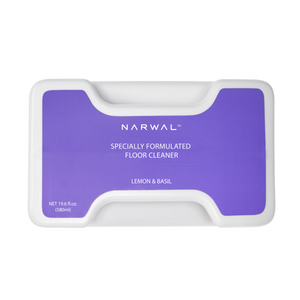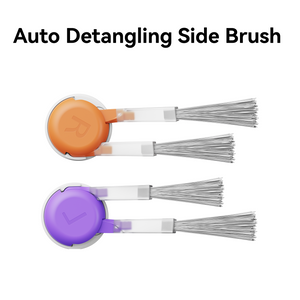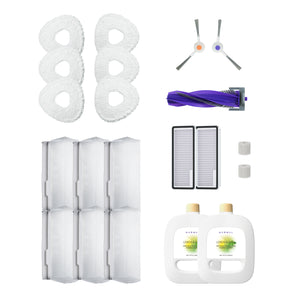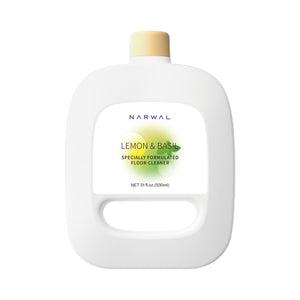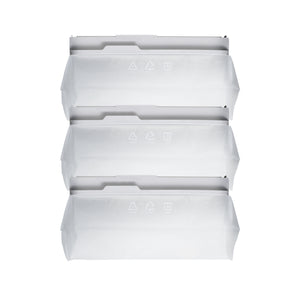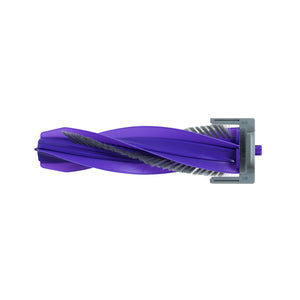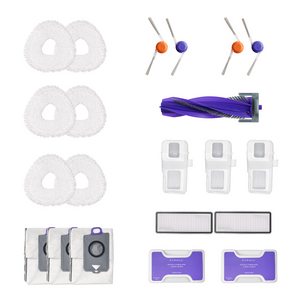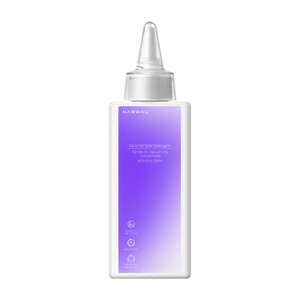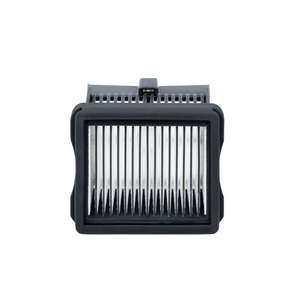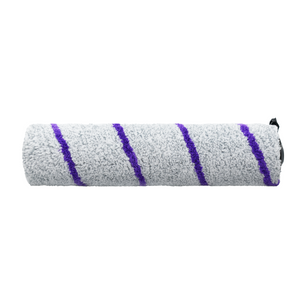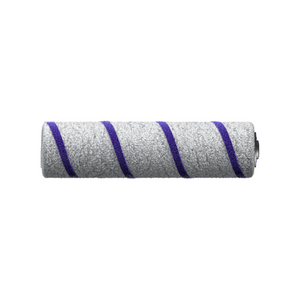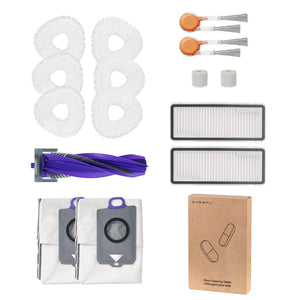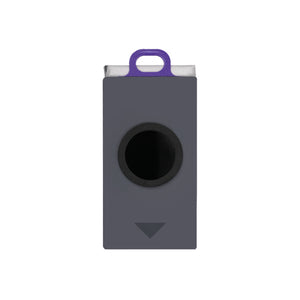Which robot vacuum has the best mapping? In this guide, we compare top mopping models with and without mapping—like the Narwal Freo Z Ultra and Lefant M210—to show how mapping technology impacts cleaning performance. Through side-by-side testing, we found that mapping vacuums clean more efficiently, avoid obstacles better, and remember your room layout. If you're deciding between a robot vacuum with mapping or one without, this article breaks down everything you need to know to make the right choice.
Many users find that random-cleaning models waste time and leave dirt behind. Tests show mapped vacuums clean up to 40% faster and cover more space with fewer errors.
What is Mapping in Robot Vacuums?
Mapping in robot vacuums is how the vacuum figures out the layout of your home to clean it better. Using sensors like lasers, cameras, or simple detection systems, the vacuum "sees" the rooms, furniture, and obstacles around it.
Here’s how different types of mapping work:
- Laser mapping (LiDAR): The vacuum uses lasers to "scan" the room and make a detailed map, which works well even in the dark.
- Camera mapping: It uses a camera to recognize objects and understand the layout, but it needs light to work properly.
- Basic sensors: These detect things nearby, like walls or furniture, but give a simpler map.
Once it knows the layout, the vacuum plans its path to clean more efficiently. You can even tell it where to clean or where to avoid, like around pet bowls or fragile furniture. This makes it smart enough to adapt to your home and clean just the way you want.
Now that we know the definition of mapping, let’s dive into the differences between mapping and non-mapping robot vacuums.
Mapping vs. Non-Mapping Robot Vacuums: Key Differences
If you're comparing robot vacuums with mapping vs. those without, the differences go far beyond just navigation style. Mapped vacuums create smart, structured paths and adapt to your home layout, while non-mapping models clean randomly, often missing spots. Here's a quick breakdown of the main differences:
|
Feature |
Mapping Robot Vacuum |
Non-Mapping Robot Vacuum |
|
Navigation |
Systematic, room-by-room |
Random, unstructured |
|
Cleaning Coverage |
High coverage, minimal repeat |
May skip or re-clean same areas |
|
Setup |
Initial map creation needed |
No setup required |
|
Efficiency |
Cleans faster, optimized path |
Slower, inefficient |
|
Obstacle Avoidance |
Advanced (LiDAR/cameras) |
Basic sensors or bump navigation |
|
Multi-room / Multi-floor |
Yes, supports map saving |
No memory between sessions |
|
Best For |
Large, complex homes |
Small spaces or simple layouts |
Robot Vacuum Mapping Comparison: Real Test Between Narwal Freo Z Ultra and Lefant M210
We conducted a side-by-side real test to compare robot vacuums with and without mapping. This robot vacuum mapping comparison features the Narwal Freo Z Ultra (with mapping) and the Lefant M210 (without), showing how mapping technology affects performance, accuracy, and cleaning efficiency.
In order to present the technical specifications of the products more clearly, we have created a detailed table. We hope this resource will be helpful to you:
|
Specification |
Narwal Freo Z Ultra |
Lefant M210 |
|
Robot Dimensions |
48.8 x 44.5 x 64.3 cm |
11.0 x 11.0 x 2.8 cm |
|
Battery |
5200mAh Li-ion (Clean 150 square meters in 3 hours) |
Works up to 120 minutes on a single charge |
|
Base Station Dimensions |
41.5 x 37.0 x 43.4 cm |
28 x 28 x 7.6 cm |
|
Available Colors |
White & Grey |
Black & White |
|
Suction Power |
12,000 Pa |
2000 Pa |
|
Special Features |
Dual RGB camera, LiDAR mapping, self-cleaning, adaptive hot water mop cleaning, AI object avoidance |
Silent mode, turbo mode, automatic, spot, edge, zigzag, manual |
|
Device Compatibility |
Narwal app (iOS and Android) & Alexa & Google & Siri |
Google Assistant & Alexa |
|
Applicable Surfaces |
Hardwood/Tiles/Carpets |
Floor/Parquet/Carpets |
|
Mapping |
Yes, with LiDAR |
No |
|
Obstacle Avoidance |
Dual RGB camera, AI detects 120+ objects |
/ |
All the robot vacuums reviewed in this guide come with advanced mapping technologies—or deliberately lack them to highlight performance differences. Models like the Narwal Freo Z Ultra feature LiDAR-based laser mapping and RGB visual navigation, while others like the Lefant M210 rely on random cleaning patterns without any mapping support. If you're specifically looking for a robot vacuum with mapping features, these comparisons show exactly how they impact cleaning results.
Narwal Freo Z Ultra Testing Report
[cta:narwal-freo-z-ultra-robot-vacuum-mop]
In this testing, we focused specifically on the mapping capabilities of the Narwal Freo Z Ultra, a feature that greatly influences the efficiency and accuracy of its cleaning performance. Below is an in-depth review of how well its mapping functions perform, along with observations from real-world scenarios.
Mapping Process and Initial Setup
Upon first activation, the Narwal Freo Z Ultra immediately initiates a complete mapping of its surroundings. Starting from the base station, it moves around the home, gathering spatial data using a combination of LiDAR sensors and dual RGB cameras. This dual-sensor system allows it to create a highly detailed map of the environment in under 10 minutes. The mapping process itself is straightforward and fully guided through the Narwal Freo app, making setup easy for first-time users.
After completing the initial mapping, users can divide the home into specific rooms via the app, assign cleaning routines to each room, and even set “no-go zones.” This customization feature allows users to tailor cleaning to specific areas, optimizing the robot’s path based on household needs.
Mapping Accuracy and Room Layout Precision

The Narwal Freo Z Ultra’s mapping system is powered by LiDAR technology and dual RGB cameras, which together ensure high mapping precision. The LiDAR sensor performs a 360° scan of the environment, creating a 3D representation of the space, while the RGB cameras identify and distinguish objects in the room, like furniture, to avoid collisions.
In our testing, this setup proved highly effective, allowing the robot to accurately detect room dimensions and maintain precise navigation even in complex layouts. The map generated in the app was detailed, capturing room edges, doorways, and larger obstacles, ensuring a comprehensive understanding of the environment. Additionally, this mapping accuracy translated to efficient cleaning, as the robot was able to follow an optimized path and avoid retracing areas it had already cleaned.
Obstacle Detection and Avoidance
Narwal Freo Z Ultra’s mapping system goes beyond basic layout recognition by incorporating obstacle detection into its mapping capabilities. Using both the LiDAR and camera sensors, the robot detects objects such as furniture, shoes, and small items left on the floor. In our real-life scenario test, it skillfully avoided obstacles like chair legs and low-lying objects without bumping or getting stuck, a result of its dual RGB camera integration for object identification.
Its EdgeSwing technology allowed the Freo Z Ultra to clean along walls and around obstacles with impressive precision. For instance, it was able to move closely along the baseboards and furniture edges without missing spots or hitting items, showcasing the effective integration of mapping and edge-cleaning functionalities.
Room Mapping Flexibility and Multi-Room Storage

After the initial map creation, the Narwal Freo app enables users to save and customize multiple floor plans. This is especially useful for multi-level homes where each level requires separate maps and cleaning routines. During our test, we found that the Freo Z Ultra effectively stored and switched between different floor plans without needing to re-map each time it moved to a new level. This feature significantly enhances usability for larger homes.
The app also allows users to create “no-go zones,” where the robot will not enter, and to prioritize specific areas for targeted cleaning. This flexibility lets users customize the mapping to suit different cleaning needs across various rooms and levels.
Real-Time Adjustments and Dynamic Navigation

One of the standout features of the Narwal Freo Z Ultra is its ability to make real-time adjustments to the map as it encounters new obstacles or room changes. For example, if the furniture is moved, the robot detects this change and recalculates its path, updating the map in real-time. This capability was highly useful during testing, as the robot could adapt its navigation without restarting the mapping process, ensuring uninterrupted cleaning.
Overall Assessment of Mapping Capabilities

In summary, the Narwal Freo Z Ultra’s mapping function proved to be highly advanced and reliable across various scenarios:
- Speed and Efficiency: Mapping was completed within 10 minutes, providing a fast setup and a well-defined layout.
- High Mapping Precision: Dual LiDAR and RGB cameras allowed the robot to detect room dimensions and obstacles accurately, leading to optimized cleaning paths.
- Customization: The app’s customization options, including room division, multi-floor mapping, and “no-go” zones, offer a highly tailored cleaning experience.
- Real-Time Adaptation: The ability to adjust the map dynamically when new obstacles are detected ensures the robot operates smoothly even in changing environments.
The Freo Z Ultra’s mapping system combines speed, accuracy, and flexibility, making it a powerful solution for efficient and effective home cleaning, especially in complex or multi-level homes.
Test of Lefant M210: Mapping Performance Review

Since the Lefant M210 robot vacuum does not have a mapping function, this review will focus on how it performs without this feature and how the lack of mapping impacts its overall cleaning efficiency.
Lack of Mapping Functionality
The most noticeable difference with the Lefant M210 is the absence of any mapping capabilities. Unlike robot vacuums equipped with mapping, which systematically scan and plan their cleaning paths, the Lefant M210 relies on random navigation. Without mapping, it can’t remember where it has cleaned or where obstacles are, which results in a less structured cleaning pattern.
During testing, the M210 often repeatedly vacuumed certain areas while leaving others untouched, which is a common issue for robots without mapping. This random navigation is not ideal for larger homes, as the robot can wander between rooms without fully covering any single area. In a smaller space, however, this random path can be more manageable.
User Involvement and Manual Assistance

Without a mapping system, the Lefant M210 requires more manual intervention from the user. For example, in our test, we frequently had to lift the robot and place it in areas it had missed. This is something you wouldn’t encounter with mapping vacuums that methodically cover each area.
Furthermore, the M210’s lack of downward sensors means it’s prone to falling down stairs or missing drops, which can lead to accidents in multi-level homes. The lack of precise location tracking means the vacuum doesn’t know the layout of the home and can often miss crucial spots that need cleaning.
Performance in Small Spaces
Despite its lack of mapping, the Lefant M210 performed reasonably well in small spaces. For homes under 30 square meters, it can vacuum most areas within its 100-minute runtime. In this context, the random navigation was less problematic, as the smaller size made it more likely that all areas would be cleaned through repeated passes.
The app provided some assistance by offering a real-time view of the areas that had been cleaned, but it doesn’t save or record any maps for future use. The lack of a saved map means that each cleaning session starts fresh, without memory of previous cleanings or room layouts.
Difficulty with Obstacles
One of the drawbacks of not having a mapping function is the robot’s limited ability to handle obstacles effectively. The Lefant M210 had trouble navigating around small objects and sometimes got stuck on items like the legs of drying racks or cables. This is where a mapped path would have allowed the robot to avoid such objects more efficiently.
Conclusion on Mapping Capabilities

The Lefant M210's lack of mapping functionality is a key limitation, especially in larger homes or spaces with complex layouts. Its random navigation can lead to inefficient cleaning patterns and missed areas, and it requires more hands-on management from the user. However, for smaller spaces or users who don’t prioritize systematic cleaning, it still provides decent performance at an affordable price point.
In our tests, we compared Narwal Freo Z Ultra (with mapping) and Lefant M210 (without mapping). Beyond these, here are more top picks for 2025 if you’re ready to shop.
Best Mapping Robot Vacuums in 2025: Tested and Reviewed
If you’re looking to buy a mopping robot vacuum with mapping, it helps to compare not only performance but also how each model fits your home type. Below are some of the best options, from premium Narwal innovations to alternatives in the wider market.
Narwal Flow
For households that demand both power and intelligence, the Narwal Flow sets a new standard. With 22,000 Pa hyper suction, real-time FlowWash mop self-cleaning, and AI obstacle avoidance, it is designed for busy apartments where both hard floors and carpets need deep cleaning. Its slim 3.7-inch height also makes it ideal for homes with low furniture.
[cta:flow-robot-vacuum-and-mop]
Narwal Freo Z10
The Narwal Freo Z10 focuses on precision edge cleaning and hygienic maintenance. Its triangular mop pads simulate hand-scrubbing, making it effective on stubborn stains and corners. With DirtSense 3.0 to detect mess levels and a fully automated base station, it suits families who want minimal effort while maintaining spotless floors.
[cta:narwal-freo-z10-robot-vacuum-mop]
Roborock S8 Pro Ultra
Roborock’s S8 Pro Ultra combines 6,000 Pa suction with a versatile base station that washes, dries, and refills automatically. It’s a good option for large apartments where convenience and brand ecosystem matter more than raw suction power.
Ecovacs Deebot T20 Omni
For buyers balancing price and advanced features, the T20 Omni offers hot-water mop washing and auto mop lifting to keep carpets safe. With 6,000 Pa suction, it provides strong all-round performance at a mid-range price point.
When choosing a mapping robot vacuum, consider your apartment size, floor type, and cleaning habits. Narwal Flow excels in raw power and self-cleaning, Freo Z10 in detailed edge care, while Roborock and Ecovacs remain strong alternatives for broader ecosystems and budgets.
How to Use and Remap a Robot Vacuum with Mapping
To use and remap a robot vacuum with mapping, you start by creating an initial map, then update or rebuild it when your layout changes. Most models allow you to save, edit, and even store multi-floor maps in the app.
Step 1: Run a full cleaning to let the robot create its first map.
Step 2: Save and label rooms in the app for targeted cleaning.
Step 3: If you move or rearrange furniture heavily, rebuild the map for accuracy.
Step 4: In multi-floor homes, take advantage of multi-floor mapping so the robot can switch between levels without starting from scratch.
Is a Mopping Robot Vacuum with Mapping Worth It?
Yes, for most households with larger spaces, multiple rooms, or pets and kids, it is worth it. A mopping robot vacuum with mapping cleans systematically, avoids obstacles, and remembers your floor plan. This saves time and reduces manual work—making it a smart investment.
For smaller apartments or tighter budgets, an entry-level model without mapping may be enough. It still handles daily dust and light spills, though less efficiently. If you want the most thorough clean, look for advanced models like the Narwal Flow, often ranked among the best robots for mopping thanks to its real-time self-cleaning mop and powerful suction.

Final Thoughts: Why Mapping Elevates Mopping Robots
A robot vacuum without mapping can handle light cleaning, but when it comes to combined vacuuming and mopping, mapping makes all the difference. It ensures full floor coverage, avoids obstacles, and lets you target rooms or set no-go zones with ease. Advanced Narwal models like the Narwal Freo Z Ultra and Narwal Flow bring together precise mapping, powerful suction, and real-time mop self-cleaning—delivering a smarter, more hygienic solution for modern homes.
FAQs
1. Which robot vacuum has the best mapping?
Based on our side-by-side tests, the Narwal Freo Z Ultra stands out as one of the best robot vacuums with advanced mapping capabilities. It uses both LiDAR sensors and dual RGB cameras to create precise, 3D maps of your home—capturing walls, furniture, and even small obstacles with impressive accuracy. During testing, it completed its initial mapping in under 10 minutes and was able to navigate complex room layouts without missing any areas. Its ability to update maps in real time, support multi-floor mapping, and let users create no-go zones makes it an ideal choice for smart, hands-free cleaning.
2. Can robot vacuums remap your home?
Yes. If you move furniture or relocate the charging base, most mapping models allow you to delete the old map and create a new one for accurate cleaning.
3. Which robot vacuums support multi-floor mapping?
Many advanced models store multiple maps, so you can clean upstairs and downstairs without starting from scratch each time.
4. How to get a robot vacuum to map properly?
Clear the floor of clutter, start a full cleaning cycle, and let it run without interruption. This ensures the map is accurate for future cleanings.
5. Are mapping robot vacuums safe for privacy?
Yes. Mapping is based on sensors like LiDAR or RGB cameras to detect walls and obstacles. Data is processed locally or via encrypted apps, so your floor plans are not shared publicly.





















